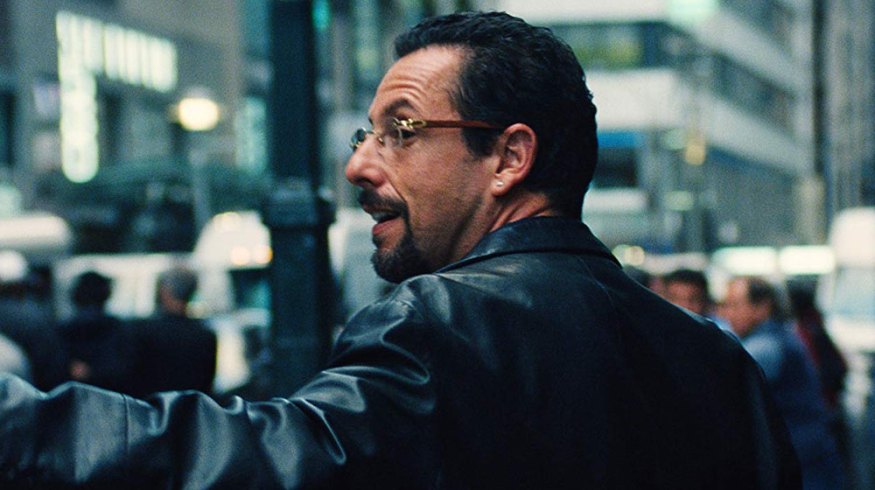
Capturing the Kinetic Filmmaking Energy of the Safdie Brothers
A look into how the Good Time and Uncut Gems filmmakers — Benny and Josh Safdie — create kinetic energy and dynamic color palettes in their films.
There’s something undeniably fascinating about the films created by the Safdie brothers. Born and raised in New York, Benjamin Safdie and his younger brother, Joshua Safdie, have put together an impressive list of stylized and energetic films, the most recent being Good Time (2017) and Uncut Gems (2019).
And, while the brothers didn’t just wake up and decide on a style that’s quickly becoming recognizable, they’ve been a subtle part of a greater filmmaking trend, lending itself to handheld shakiness, quick-cuts, and an abundance of kinetic energy on screen.
For filmmakers who have recognized the style in the Safdie brothers’ films, or are just interested in finding new and creative ways to make their projects more fast-paced and interesting, let’s take a look at this Safdie-kinetic filmmaking style.
Kinetic Shooting Styles
Looking back through the Safdie brothers’ films, the duo have a proclivity for shooting handheld, documentary-style projects. However, to really get that kinetic energy, you need to do more than just drop the tripod. The energy comes from consistent movement, whether that is in the frame or with the camera — or often both.
Also, shooting “handheld” can be a catch-all phrase for actually using any number of mounts and rigs that can create freer movement, and even some natural jerkiness, but still be smooth enough for tight close-ups and long action shots.
The Safdie brothers do a great job of letting scenes and moments build. Honestly, their films aren’t pulse-pounding one-hundred percent of the time. Instead, they let intimate scenes stay static when it’s necessary with minor “handheld” movement. However, they often do this with a purpose — to help build the fast-action sequences to really erupt.
Vibrant Colors and Palettes

The use of certain colors paints a picture concerning the nature of a character, as well as the location. Image from Good Time (via A24).
Another way you can create energy in your films is through color. Not unlike contemporary directors — like Harmony Korine or Nicolas Winding Refn — the Safdie brothers often find interesting and bright colors with which to cast their characters and scenes. These vibrant colors aid in the storytelling by helping to establish motifs and cast certain characters in figurative light.
The Safdie brothers’ vibrant color palettes are often juxtaposed against the dark, gritty shades of New York, creating a sense of energy and commotion that resonates throughout.
Seedy Locations (and Characters)
And, it’s not just the colors that create energy in the setting. The locations and characters themselves become part of the fabric of your film, creating a sense of rambunctiousness. Looking at Uncut Gems, in particular, the shots are often full of characters and activity.
Going in and out of buildings, crossing paths with people on the street, and characters traveling with entourages are all elements of movement and action. Not to mention the storytelling information constantly presented as audiences try to figure out who everyone is, and if and how they might play a part in the narrative.
Fast and Jerky Editing

The kinetic energy of a scene creates action and suspense for the audience. Image from Good Time (via A24).
Along with all the actual production elements, there are more ways to build kinetic energy in your films during post-production. If you haven’t seen the Safdie brothers’ films and just watch a few of the trailers, you should pretty much instantly feel the level of energy editing can create.
Fast action and quick-cuts are obvious ways to create feelings of energy and speed. In Good Time, for example, which has a fantastic opening bank heist scene, we get a cacophony of shots strung together to create action and suspense. However, the kinetic energy comes from the jerky, and occasionally awkward, cuts that leave the audience with a jarring feeling.
Pulsing Soundscape
Finally, as any musician or audio expert will tell you, the true key to creating a kinetic and energetic film (or video) project comes from the audioscape and soundtrack. Good Time and Uncut Gems, in particular, have received praise for their pulsing soundscape, created by composer Daniel Lopatin (also known as the musician Oneohtrix Point Never).
The soundtrack provides auditory cues for the audience to recognize when the energy is building (in even the most mundane of shots), and provides a style and tone for the project, as a whole.
If you’re curious about working with audioscapes, check out our trailer here for 80+ free cinematic atmospheres.
Cover image from Uncut Gems (via A24).
For more filmmaking inspiration and resources, check out these articles below:






